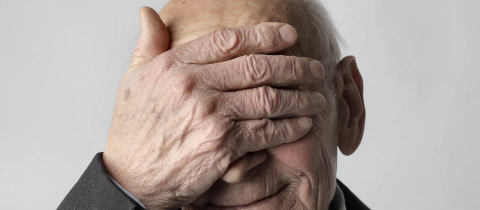Congrats, you have a wart! Now what? Head to the pharmacy for one of the at-home kits? Head to the doctor’s office for cryotherapy or some other treatment? What if I told you to head to the hardware store instead?
Duct tape occlusion therapy for warts was first written about by Litt in 1978 and involves, well, basically what you think it does: Covering a wart with duct tape for about 6 days before removing the tape, soaking the wart in warm water for 5 minutes, and gently rubbing it with a pumice stone. The process is repeated until the wart resolves.
Besides the potential cramp in your style caused by trying to accessorize some duct tape, this method seems almost too easy. No scarring, minimal pain, low cost, and you may not even need to see a doctor. But, as we always say, if something seems too good to be true, it probably is. So let’s see what the studies have to say on the veracity of this therapy.
There are only four studies that have attempted to test this method, so let’s start with the oldest. In 2002 Focht et. al. compared duct tape to cryotherapy in 51 patients under 22 years of age. They used the same duct tape you probably have in your home right now and instructed patients to leave it on for 6 days at a time, for up to two months. To this they compared traditional cryotherapy of warts, wherein liquid nitrogen was applied to a wart using a Q-Tip for 10-20 seconds, every 2-3 weeks, for a maximum of 6 applications.
They found that 85% of patients who used duct tape saw their wart resolve, compared to 60% of patients who received cryotherapy, and concluded that duct tape was a better method for treating warts than cryotherapy.
So that solves it right? Duct tape works. I’m done writing this now, you’re done reading it, and we can both go take a nice bath or have a pint and watch Netflix.
Sadly, not quite.
There have been some more, and less, valid criticisms levied at this study. In the more valid category, there are concerns about sample sizes. 51 patients isn’t nothing, but with more patients comes more certainty. There are also valuable concerns about the ages of the participants. Since roughly 65% of pediatric warts clear up on their own, and the average age of participants was 9, it could be that many of the studies warts went away regardless of the treatment they received.
In the less valid category are concerns that the liquid nitrogen in this study wasn’t applied for long enough. At least one doctor stated that “a 10-second application… is only useful to treat very thin lesions”. However, this study found that what they called a “more aggressive cryotherapy” of 10 seconds to be effective in 64% of patients. They also found that 64% of those receiving 10 second freezes reported ill effects like pain or blistering, with 5 even withdrawing from the study. With this in mind, the 10-20 seconds that the Focht et. al. study used seems fine to evaluate the efficacy of cryotherapy.
In 2006, de Haen attempted a similar study, using 103 school children from the Netherlands. However, instead of comparing duct tape to cryotherapy, they used corn pads worn only one night a week as the placebo control. They found that only 16% of warts resolved after 6 weeks of duct tape therapy, versus 6% in the placebo group.
Similarly, in 2007, Wenner tested duct tape against a control of moleskin in 80 immunocompromised adults and found that only 21% of tape-treated warts resolved versus 22% of moleskin-treated ones.
What happened? Was the first study a fluke? The answer may lie in the type of tape used in these studies. You see, the initial, pretty successful study used your run-of-the-mill silver duct tape. The other two studies, however, in an attempt to blind participants to what they were using, used transparent duct tape.
As it turns out, transparent duct tape (as well as corn pads and moleskin) use acrylic-based glues as their adhesive, while traditional duct tape uses a rubber-based adhesive. Since researchers aren’t certain the mechanism by which duct tape may help with warts (although they theorize that its due to the skin beneath the tape breaking down and stimulating an immune response) we cannot rule out the idea that the type of adhesive plays a role.
It may also have something to do with the adhesiveness of the tapes used. While the participants in the initial Focht study reported some trouble keeping tape attached (mostly on their hands), the participants of the other two studies experienced significant troubles keeping their tape engaged. Whether this was just random chance, or due to the type of tape used, we don’t know. But there is that fourth study I mentioned; whose results may support a lack-of-stickiness as the problem.
This 2016 study by Al-Dhubaibi compared cryotherapy and occlusion therapy for warts, but instead of using only duct tape, they covered warts in cyanoacrylate, or super glue and duct tape. Using super glue on warts turns out to be a patented method that works much the same as duct tape, except that when the glue is removed every 6 days, some of the wart is removed with it. Al-Dhubaibi treated 30 patients between the ages of 6 and 37 with superglue that was then covered in duct tape and found that 80% of their warts resolved within 8 weeks, compared to 60% of those treated with cryotherapy.
So, what can we conclude? Honestly, not that much. The evidence certainly seems to point to occlusion therapy being an effective method of treating warts in patients of all ages, provided the adhesive nature of the treatment is strong enough. But (there is always a but in science), none of these studies were truly double-blind and none of them were on very large groups of patients. Until we can be more certain of a mechanism, it’ll be hard to know what method of occlusion therapy for warts is the best.
That being said, treating your warts with duct tape, superglue or both costs very little, isn’t very difficult or time-consuming and has a pretty low chance of harming you in any way. Personally, if I ever get my first wart (which I hopefully won’t) I’ll probably be trying one of these methods for at least a few weeks before talking to my doctor.
Want to comment on this? View it here on our Facebook page!







